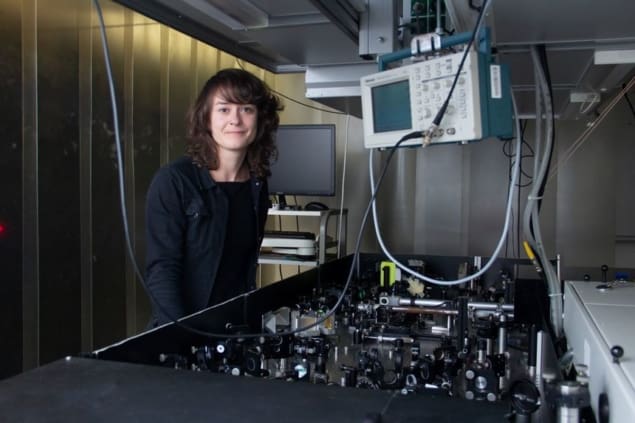
Intense, ultrashort pulses of terahertz radiation have been generated with an unprecedented degree of efficiency by an international of team of researchers led by Stelios Tzortzakis at the Institute of Electronic Structure and Laser of the Foundation for Research and Technology-Hellas in Greece. Their technique could unlock a broad range of new applications including those that will benefit materials physics research.
Lying between microwave and infrared frequencies, terahertz radiation is and intriguing and underused portion of the electromagnetic spectrum. Terahertz photons have relatively low energies and therefore do not damage materials (or living tissues) as they pass through. In principle, this would make them ideal for a variety of imaging and analysis applications from medical and security scanning to the study of materials.
One challenge facing researchers is developing practical ways of generating terahertz pulses of enough intensity to be useful. The current ability to generate only extremely weak terahertz pulses – along with challenges in detecting the radiation – has left a “terahertz gap” in technology. The ability to create, higher intensity pulses, for example, would allow researchers to study nonlinear effects in materials — providing a wealth of new information.
Two-colour filamentation
Tzortzakis’ team, which included Claudia Gollner and colleagues at the Technical University of Vienna, have generated intense terahertz pulses by improving on an existing technique called “two-colour filamentation”. This involves firing an infrared laser at a nonlinear medium, which creates radiation with twice original infrared frequency. The two frequencies (or colours) of light combine to create an electric field with a highly-specific asymmetric shape. When this field is focused onto a small volume of air, it creates a plasma that accelerates electrons that emit terahertz radiation.
The newly optimized setup was developed by the Vienna team and is the first to use pulses of mid-infrared light with a wavelength of 3.9 µm. The resulting terahertz pulses last just tens of femtoseconds and are intense enough to carry energies of almost 200 µJ, and have electric field strengths as high as 100 MVcm-1. This makes the pulses intense enough to interact with matter on an atomic scale.
In addition, pulses have extremely broad spectra, encompassing the entire terahertz range. Overall, the process had an unprecedented conversion efficiency of 2.36%, which exceeded previous experimental values by several orders of magnitude. The ability to create such high-intensity pulses could lead to new opportunities for using terahertz radiation in areas including medical diagnostics, food inspection, and security.
Looking to the future, the team has done computer simulations that suggest further optimization could push their technique’s efficiency to a high as 7%. The team now hopes to demonstrate two-colour filamentation processes approaching this value. If achieved, this could allow for the first affordable tabletop terahertz systems, suitable for experiments involving nonlinear optics.
The research is described in Nature Communications.



